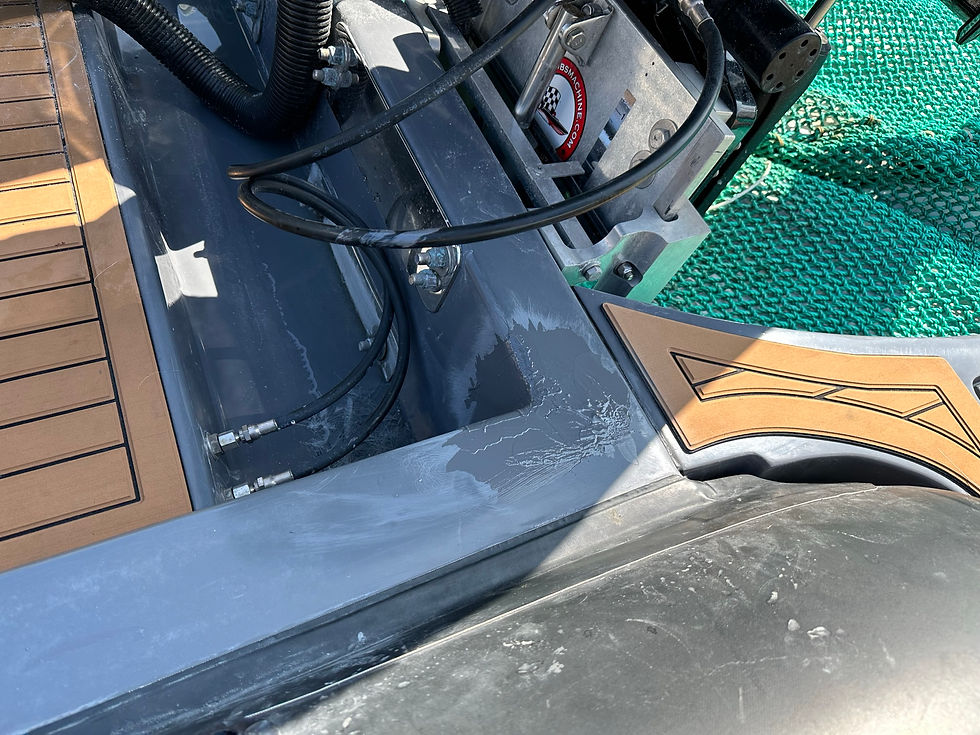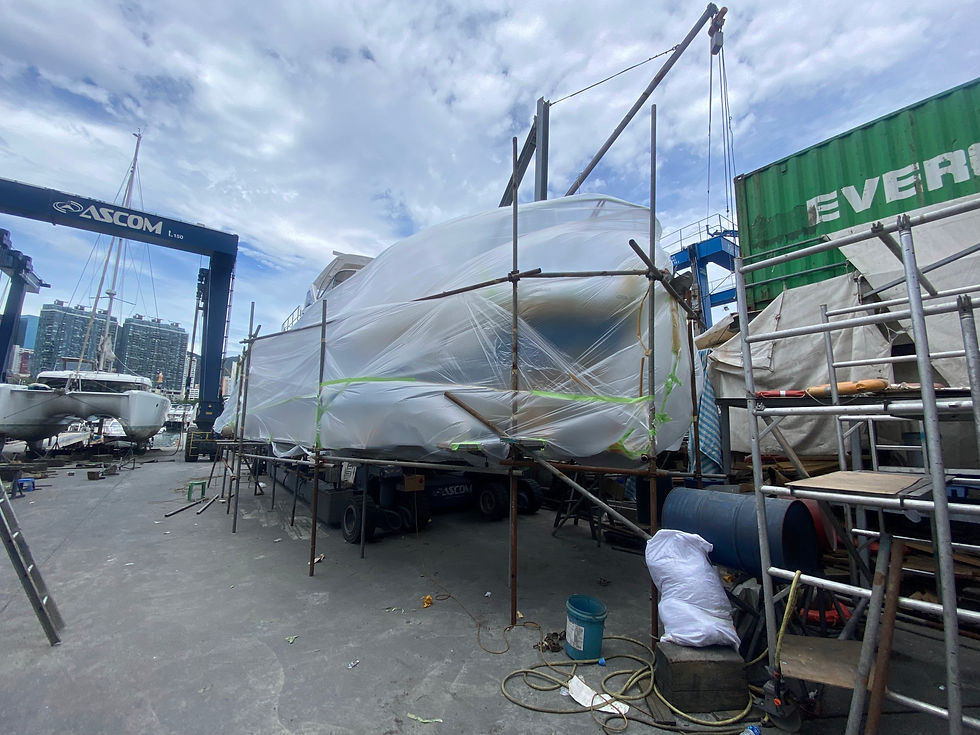Differences between Gel Coat and Spray Paint. Which one should you choose?
- legacyyachtcare
- 2023年8月24日
- 讀畢需時 2 分鐘
Gel coat is a formulated polyester resin that is designed to be used as a protective or decorative coating on fiberglass parts. It is a material that provides a high-quality finish. It is typically much thicker than paint. Gel coat offers several advantages over traditional paint for marine and fiberglass applications
Advantages:
Durability and Resilience: Gel coat is a thick, protective layer that is built into the fiberglass structure. It provides superior resistance to UV rays, water, and other environmental factors, making it more durable than paint.
Repairability for small areas: While both gel coat and paint can experience damage, repairing gel coat is often simpler. Small scratches and chips in gel coats can be filled and polished to restore the original finish, whereas paint repairs might involve more extensive sanding and repainting.
Aesthetics: Gel coat can create a high-gloss, glossy finish that enhances the visual appeal of marine vessels and fiberglass structures. Its smooth surface can be more attractive and mirror-like compared to some paints.

<Gel goat is an excellent solution for small repair>
Disadvantages:
Complex Repairs: While small gel coat repairs can be straightforward, larger repairs can be more complex and time-consuming. Gel coat repairs involve multiple times of sanding.
Vulnerable to oxidation: Although gel coat is more resistant to UV rays than paint, it can still experience gradual fading and dulling of color over extended periods of exposure to sunlight.
Take on stains more easily: Gel coat has a more porous surface than paint. These pores trap stains easily and need frequent care.
Paint offers several advantages over gel coat in certain situations:
Versatility in Colors and Finishes: Paint provides a wider range of color options, including custom and complex color schemes. It also offers a variety of finishes, from glossy to matte, satin, metallic, and more.
Weight Considerations: Paint can be applied in thinner layers than gel coat, potentially reducing the overall weight of the finished product. In applications where weight is a critical factor, such as racing vessels, this can be advantageous.
Complex Surfaces: Paint can be applied more easily to complex shapes and contours, making it suitable for intricate designs and surfaces that are challenging to coat with gel coat.
UV Resistance and Color Retention: High-quality marine paints often include UV inhibitors that resist fading and color deterioration over time. This can result in longer-lasting color vibrancy compared to gel coats.
Disadvantages:
Expensive materials: While high-quality marine paints offer a lot of features, they might cost you when the repair area needs layers of spray.
Prone to Chipping and Peeling: Painted surfaces can be more susceptible to chipping, peeling, and scratching, especially in high-impact areas or during routine maintenance as paint has a thinner layer than gel coat.
Complex Repairs: Larger paint repairs can be more intricate and time-consuming, potentially involving extensive sanding, priming, and repainting to achieve a seamless result.
Surface Preparation: Paint application not only requires meticulous surface preparation, including priming and sanding, but also extensive masking, covering and taping to achieve optimal adhesion and finish quality.

<Masking preparation for spray painting>
When considering whether to use paint or gel coat for a specific application, it's essential to weigh the advantages of each option against the project's requirements, aesthetics, and long-term maintenance considerations. Ultimately, the choice between paint and gel coat depends on factors such as the desired appearance, durability, repairability, and the specific challenges posed by the application.
—---------------------------------------------------------------------------------------------------------------------


留言